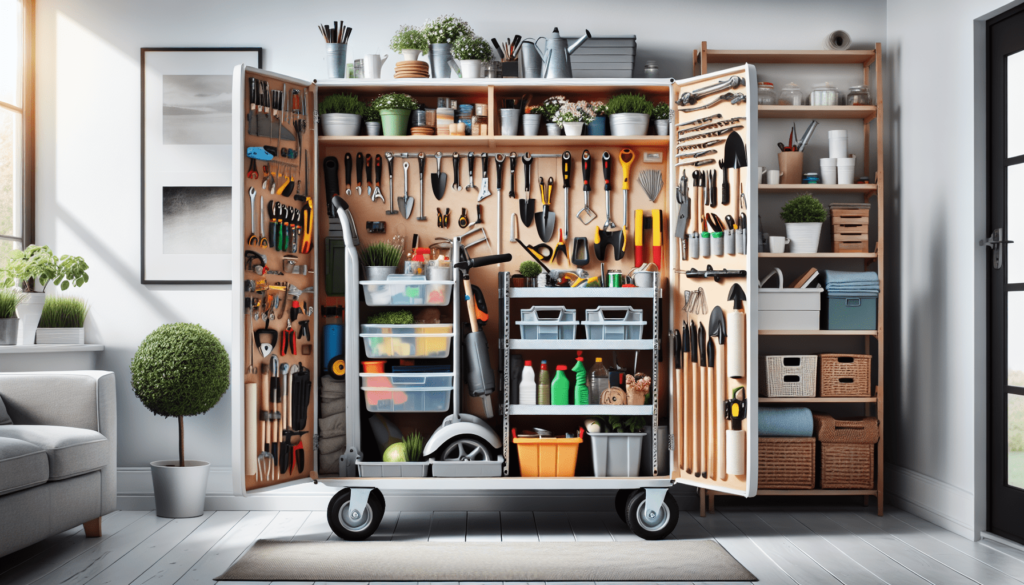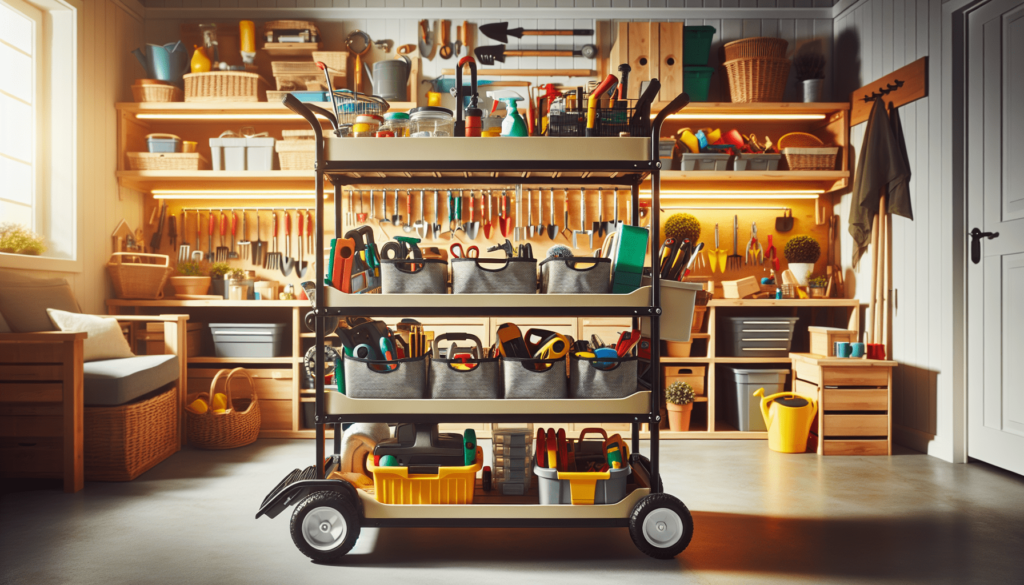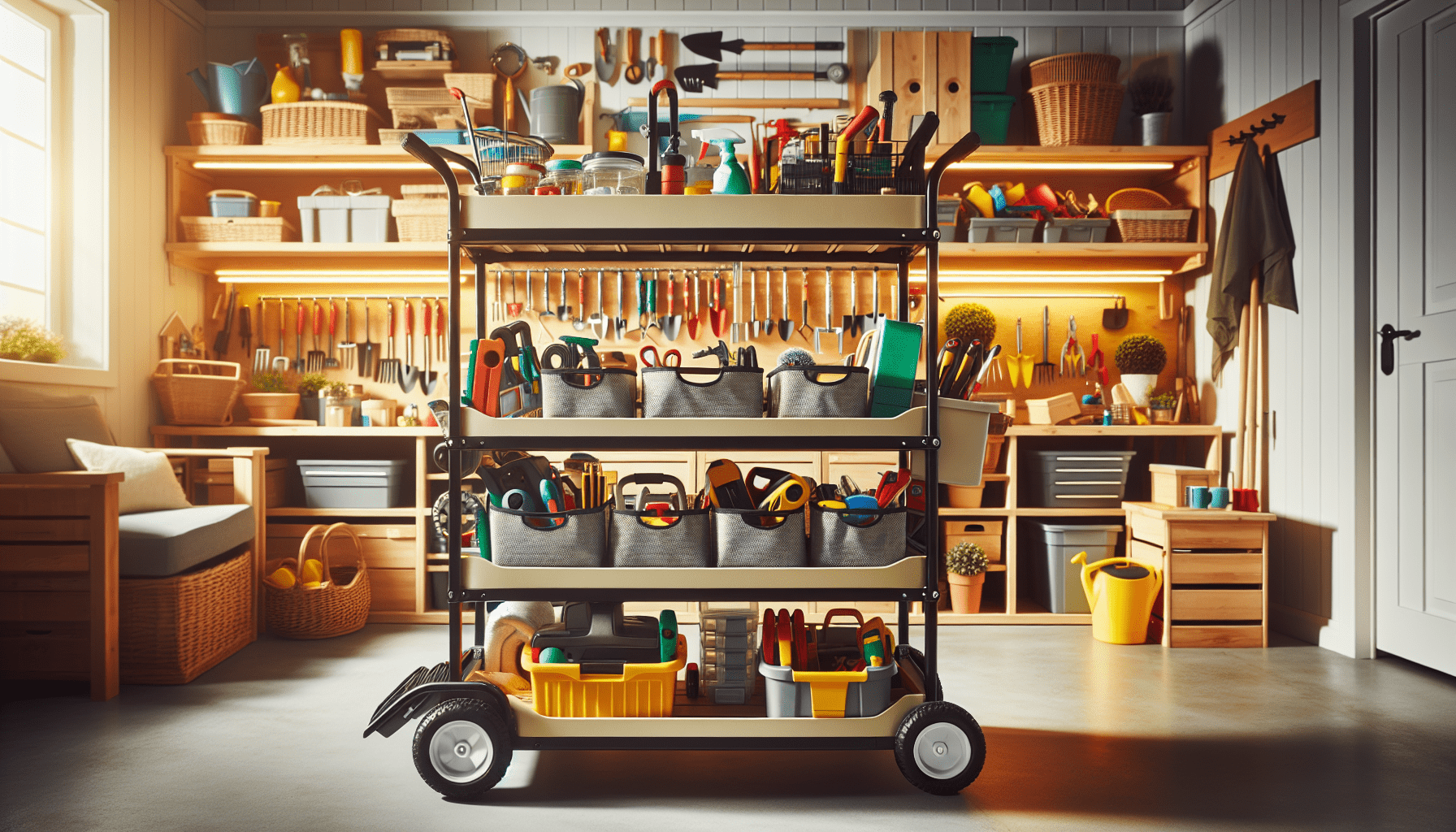Have you ever found yourself overwhelmed by the sheer variety of utility carts available? It’s easy to get lost in the options, especially when you simply need an efficient way to transport your items. Choosing the right utility cart can make all the difference in your daily tasks, whether at home, work, or during special events. Let’s break this down together.

Understanding Utility Carts
Utility carts serve a fundamental purpose—they help you transport, organize, and store different items efficiently. However, not all utility carts are created equal. Knowing what kind of tasks you’ll tackle can help guide your decision.
The Versatility of Utility Carts
Utility carts come in various shapes, sizes, and materials. This versatility allows them to adapt to different environments and needs. You might find yourself using a utility cart for a variety of purposes, from serving hot dishes at a catering event to organizing tools in your garage. Understanding the different types will help you find one that suits your specific tasks.
Material Matters
The material of the cart is paramount to its functionality and longevity. Most utility carts are made from one of three primary materials: metal, plastic, or wood.
| Material | Pros | Cons |
|---|---|---|
| Metal | Durable, often heavy-duty | Can be heavy to move |
| Plastic | Lightweight, rust-resistant | Less durable than metal |
| Wood | Aesthetic appeal | Heavier, potentially pricier |
Consider your needs carefully. If you’re looking for a cart for outdoor use or heavy-duty tasks, metal might be your best option. If you need something lighter, perhaps a plastic cart will suffice.
Assessing Your Needs
What will you use your utility cart for? Determining how you’ll be using it is key to making the right choice.
Common Uses for Utility Carts
Utility carts can accommodate a slew of tasks. Here are some common uses you might consider:
- Home use: For transporting groceries, organizing craft supplies, or holding cleaning supplies.
- Office use: To move documents, equipment, or office supplies around.
- Event planning: For catering, setting up displays, or organizing materials.
- Garage and workshop tasks: To manage tools, materials, and other equipment.
By identifying your primary usage, you can start narrowing down the features that matter most to you.
Size and Capacity
When considering a utility cart, size is crucial. You don’t want something too small that forces you to make multiple trips, nor something so large that it becomes cumbersome to navigate through tight spaces.
Dimensions to Consider
Consider both the dimensions of the cart and its load capacity.
- Height: Make sure the cart is comfortable to use without bending over or straining.
- Width: A wider cart means more storage, but it also means you need to navigate more carefully.
- Length: Consider how large of a workspace you have available.
Load Capacity is another important feature. Generally, utility carts can handle anywhere from 150 to 1,200 pounds, depending on their design.
| Cart Type | Typical Load Capacity |
|---|---|
| Standard utility cart | 150-400 pounds |
| Heavy-duty cart | 500-1,200 pounds |
Understanding the capacity you need helps prevent overloading, which can lead to damage or safety issues.
Wheel Quality
Wheels can drastically affect the functionality of your utility cart. The way it maneuver translates directly into how efficient your experience will be.
Types of Wheels
Utility carts typically come with two types of wheels: swivel and fixed.
- Swivel wheels: Offer more maneuverability, allowing you to steer around tight corners.
- Fixed wheels: Provide stability on straight paths but are less versatile.
Consider your environment. If you’ll primarily be navigating through tight spaces or twisting hallways, opting for a cart with swivel wheels makes sense.
Wheel Material Matters
Not all wheels are created equally. Here are some common materials you’ll find:
| Wheel Material | Pros | Cons |
|---|---|---|
| Rubber | Quiet, good traction | May wear down faster |
| Plastic | Durable, lightweight | Noise level may be higher |
| Polyurethane | Durable, multi-surface use | Can be pricier |
Choose the material that aligns with your needs, depending on where you’ll be using the cart most.

Additional Features
Now that you have a handle on the basics, let’s look at additional features that can enhance your utility cart experience.
Adjustable Height
Some utility carts come with adjustable heights, allowing you to cater to various tasks and user preferences. This feature can be especially useful in environments where multiple people need to use the cart, catering to individuals of different heights.
Number of Shelves
Does the cart have enough shelves for what you need to transport? More shelves mean more storage space, but they can also add to the cart’s height, potentially making it harder to maneuver.
| Number of Shelves | Pros | Cons |
|---|---|---|
| 1 | Lightweight, compact | Limited storage space |
| 2-3 | Balanced storage and maneuverability | May require more effort to lift |
| 4 or more | Maximum storage capacity | Can be bulky and hard to navigate |
Evaluate how much you need to transport at once and choose accordingly.
Handle Style
The type of handle on the utility cart can enhance your control. Some common types include:
- Push handle: Provides stability with multiple grips.
- Pull handle: Useful for transporting items over longer distances.
Integrated Storage Solutions
Look for carts that offer additional features like built-in storage compartments or hooks. These can make it easier to carry items that need a bit more organization.
Cost Considerations
Budget is often a determining factor when choosing the right utility cart. Depending on the features and materials, prices can vary widely.
Assessing Value
While it may be tempting to go for the cheapest option, consider the long-term value. A sturdier, more versatile cart may cost more upfront but could save you hassle and money down the line.
- Under $50: Basic models without many features.
- $50-$150: Mid-range carts with decent capacity and useful features.
- $150 and up: Heavy-duty and versatile models designed for extensive use.
Sometimes investing a little more can ultimately provide a better return.
Specialty Carts
If you have unique requirements, specialty carts designed for specific tasks may work better for you.
Kitchen Utility Carts
Designed specifically for food preparation, these carts often come with features like cutting boards or built-in racks for utensils.
Medical or Laboratory Carts
These carts are built to meet specific health and safety standards. They often have lockable drawers or surfaces that can be easily cleaned.
Garden Carts
If you work outdoors, a garden cart with larger wheels and a heavier frame can handle the rough terrain better than a standard utility cart.
Brand Reputation
Sometimes, looking at well-respected brands can help narrow down your choices. Established brands often have a reputation for quality, customer support, and reliable warranties.
Research Online Reviews
Before making a purchase, read customer reviews to gain insight into the reliability and performance of different models. Look for patterns in feedback—if multiple reviews mention the same issues, you may want to reconsider that cart.
Maintenance and Care
Once you purchase your cart, consider how you will maintain it. Proper care will prolong its life and keep it looking fresh.
Regular Cleaning
Wipe down surfaces regularly to remove dirt and grime. Plastic surfaces can often be cleaned with basic household cleaners, while metal may require specialized products to prevent rust.
Storage
If you need to store the cart when not in use, make sure it’s kept in a dry, sheltered location to protect it from the elements. If your cart has wheels, consider wheeling it to a well-ventilated area rather than stacking heavy items on top of it.
The Final Decision
As you comb through your options, remember that you are investing in a tool to simplify your life. Think about your unique needs, preferences, and the space you have available.
Take Your Time
There’s no rush in making this decision. Allow yourself the time to consider your needs carefully, weigh your options, and even seek opinions from friends or colleagues who may own a utility cart.
Conclusion
In summary, selecting the right utility cart for your needs involves several key factors. From understanding different types and materials to considering your specific tasks and preferences, each element plays a crucial role in your choice.
By understanding your requirements and prioritizing the features that matter most to you, you’ll be sure to find a utility cart that serves you well for years to come. Remember, the right tool can transform a daunting task into a manageable one, and finding that utility cart will set you on the path to greater efficiency and ease in your daily activities. So, what will you do next?

